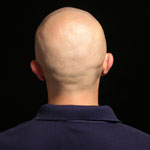Can a Non-doctor Do a Hair Transplant?

In some countries (more so in third world countries, but some non third world countries may be included here), non-physicians can legally do a hair transplant. In Western Europe, Australia, Canada, Mexico and the United States, I believe only licensed medical doctors can legally perform hair transplant surgery.
What is legal and proper, however, is not always what happens. I was an expert for the State of California in an action against a non-licensed physician passing himself off as a hair transplant surgeon. He was prosecuted along with the doctor who promoted him.
In 1992, a doctor in Cook County was charged by the State of Illinois, stating “…the business has allowed non-doctors to perform surgery on clients, including one non-physician who claims expertise as a muskrat skinner and who was first employed by Dr. [name removed] planting trees on his farm.” Illinois Assistant State’s Atty. Robert Lyons, supervisor of the consumer fraud division, said “We’re not saying the guy can’t stand there and hold gauze, but we are saying he can’t stitch a wound”. (from Chicago Tribune, July 26, 1992)
In another situation, I was a aware of a doctor in New York that was charged by the State for allowing garbage collectors to perform surgery at his clinic. Their training was apparently done after they finished collecting garbage as extra-help for the doctor. It appeared that they were coming in after hours as well, performing surgery themselves without the doctor present. It was not clear if the doctor knew of this activity but it was done in his office. I doubt that the patients were aware that these men were not physicians. I know of one business that was set up in Virginia where the technician opened their own business and hired ad-hoc doctors to cut along the dotted line and the doctors did not know anything about the field of hair transplants. I was told that sometimes the doctor did not show up so the technicians went ahead anyway. In one clinic located in Pittsburg: they hired residents from one of the universities and told them where to cut and what to do, paying them a nice hourly wage for their service. A class action suit was instituted against the poor doctors for mal-practice (I believe that they became poor). I was an expert for the plaintiff on that case and agreed to participate because the results were hideous and many, many people were deformed permanently. This Pittsburg clinic was owned by the sleazist salesman you can imagine, who must have convinced the doctors that they were doing a real service for these patient. The clinic gave the names of over 500 patient references. That was impressive, but when I got that list from one of their victims, I started down the list to call the patients and went through about 20-30 of those on the top of the list. I found that not one person on that list had anything nice to say about the clinic, the experience or the results. In fact, most people complained about their deformities and the emotionally angry conversations I had over the phone with them is what I remember most.
Non-physician clinics are opening everywhere, even if the various state laws were intended to restrict non-physicians from profiting from the practice of medicine. There is a legal work-around that has not yet been challenged in any state. Hair Club for Men (which is owned by Regis International, a $5 billion company) and Bosley (which is owned by Aderans, a Japanese hair piece manufacturer) have medical groups which are owned and run by a competent doctor who commands the hair transplant elements of the practice while the complex process of running the ‘sales driven business’ is managed by businessmen from the non-physician entity. I am not saying that a physician-owned hair transplant business is any guarantee of quality, as there are some sleazy licensed doctors out there who are as bad as the Pittsburg clinic I referenced. I have seen many results of bad non-physician and physician-owned clinics over the years and know that the victims have little recourse against the non-physician owned clinics because the state license authorities have little contol over the business entities (only the doctors who work for these clinics are controlled by medical practice agencies and laws).
Some States can not enforce the laws against non-physician owned medical clinics fast enough as entities change their names and identities as soon as the States get ready to put them away. I was hired by one State prosecutor as an expert witness against such a business entity, but the owners of the company closed down one corporation just before trial and opened a new corporate entity with an almost identical name with the exact same service. The prosecutor had to start from square one all over again. The doctor who ran that particular clinic was over 80 (he was a figure head leader with a valid medical license) and he lost his license to practice medicine because he could not change his name or protect his license. He was easily replaced with another figure head physician. Over the past few years, I have been told many times of ‘doctors’ who turned out not to be doctors doing surgery on them. It is happening all of the time (most recently a month or two ago in Los Angeles not far from my office). What is the difference between sleaze (like the Pittsburg entity) and the class act hair transplant entities? How do you know what to do, who is good and bad, how to pick a doctor and what to spend for a hair transplant? Is the bargain you are getting really a bargain? The good news is that today’s hair transplants can be absolutely first class and undetectable. The bad news is that they can be disastrous and deforming. You have to do your research to protect yourself in order to find your way through this complex maze.
One might ask, why not let a non-doctor operate on you after they’ve learned how to perform a hair transplant? Perhaps it could save you money? I won’t argue that the technical issues of the surgery are not difficult and everything goes well. The person doing the surgery would have to train a good team and teach the nuances of the surgery. But I would then ask where is the proper diagnosis, planning, and treatments that require knowledge of surgical planning, medications and how to treat a side effect of a medication or a complication if that should occur. When Xylocaine is given, can it precipitate a heart attack or a seizure? Absolutely, yes! A simple fainting episode in the operating room which slows down the heart rate to dangerous levels, can bring on a stroke or a heart attack (usually in older susceptible people with heart disease). What do non-physicians know about the treatment of such events? How do non-doctors treat run-away high blood pressure that occurs during a hair transplant (not-uncommon) in a hypertensive prone person? Or bleeding? If an inexperienced physician does a hair transplant, can he/she produce permanent nerve damage if they are not intimately familiar with the anatomy? Absolutely, yes! I can go on and on, but I hope that my readers get the message. Surgery can be safe, if it is done by a skilled, experienced and competent physician lead team, or it can kill you without such expertise. I have said many times that hair transplants are permanent and maybe I should add that death in the hands of a ‘would be surgeon’ is permanent as well. It is a buyer beware situation, as always.



 Great question! Like any good baseball team, you need to have the team work together to get a winning result. What I have consistently said is that a great hair transplant doctor can not produce great work without a great team. In 1991, the quality of the work performed by the hair transplant industry was not acceptable to me, so I had to redesign the surgical techniques to make them acceptable. I have published a massive amount of work defining the standards in hair transplantation techniques (see:
Great question! Like any good baseball team, you need to have the team work together to get a winning result. What I have consistently said is that a great hair transplant doctor can not produce great work without a great team. In 1991, the quality of the work performed by the hair transplant industry was not acceptable to me, so I had to redesign the surgical techniques to make them acceptable. I have published a massive amount of work defining the standards in hair transplantation techniques (see:  Just the other day, a 31 year old man came to my office wanting a hair transplant using the Follicular Unit Extraction (FUE) method. He had already seen 3 other doctors and I was 4th on his shopping list. I’m not knocking that — it’s a good idea to meet with more than one doctor before chosing your surgeon , even if you feel comfortable during your first consultation because comparison shopping in this industry is the best way to protect yourself. Whether I was 1st on his list or 4th on his list — I’m just glad he eventually made his way to my office. During the examination I noticed that his balding was more prominent in the front, but there was thinning everywhere, even in the donor area. His hair was light brown and his skin had moderate skin tones and people with this contrast usually show a good fullness in the ‘donor’ area, so I was immediately concerned that something was wrong with this picture. I mapped out his scalp for
Just the other day, a 31 year old man came to my office wanting a hair transplant using the Follicular Unit Extraction (FUE) method. He had already seen 3 other doctors and I was 4th on his shopping list. I’m not knocking that — it’s a good idea to meet with more than one doctor before chosing your surgeon , even if you feel comfortable during your first consultation because comparison shopping in this industry is the best way to protect yourself. Whether I was 1st on his list or 4th on his list — I’m just glad he eventually made his way to my office. During the examination I noticed that his balding was more prominent in the front, but there was thinning everywhere, even in the donor area. His hair was light brown and his skin had moderate skin tones and people with this contrast usually show a good fullness in the ‘donor’ area, so I was immediately concerned that something was wrong with this picture. I mapped out his scalp for  I just saw a 23 year old man come back to see me after he had a hair transplant with another medical group known for ‘overselling’ hair transplants using pressure tactics with an aggressive sales force. He had seen me just a few months earlier and I told him that I felt that he was not a good candidate for a hair transplant at this time, because he was too early in the hair loss process. I further told him that if he had a surgery without a course of Propecia, he might accelerate the hair loss. I thought we had agreed that he would go on Propecia in an attempt to slow down the hair loss he was experiencing and then return in 8 months for further evaluation.
I just saw a 23 year old man come back to see me after he had a hair transplant with another medical group known for ‘overselling’ hair transplants using pressure tactics with an aggressive sales force. He had seen me just a few months earlier and I told him that I felt that he was not a good candidate for a hair transplant at this time, because he was too early in the hair loss process. I further told him that if he had a surgery without a course of Propecia, he might accelerate the hair loss. I thought we had agreed that he would go on Propecia in an attempt to slow down the hair loss he was experiencing and then return in 8 months for further evaluation.